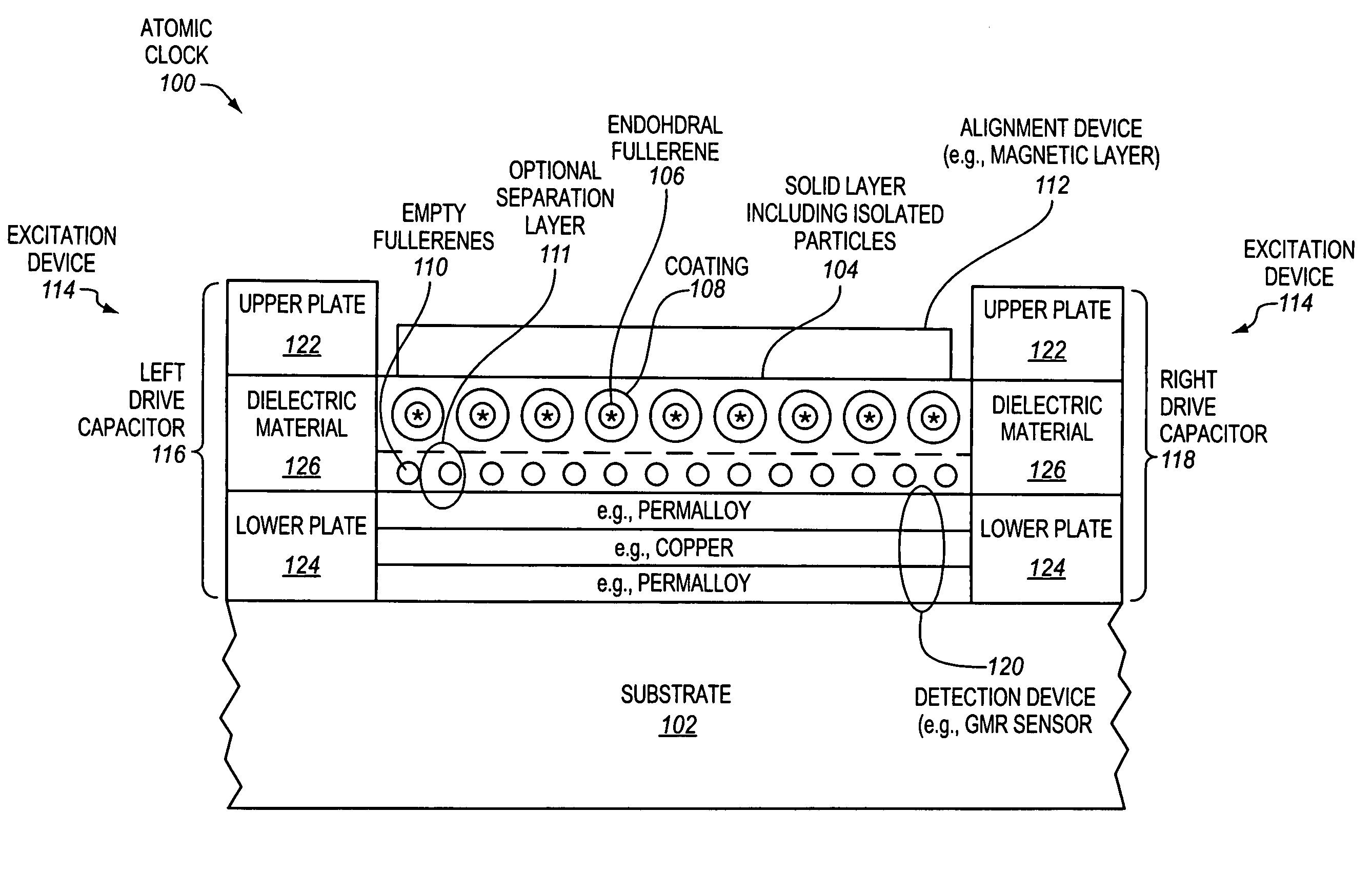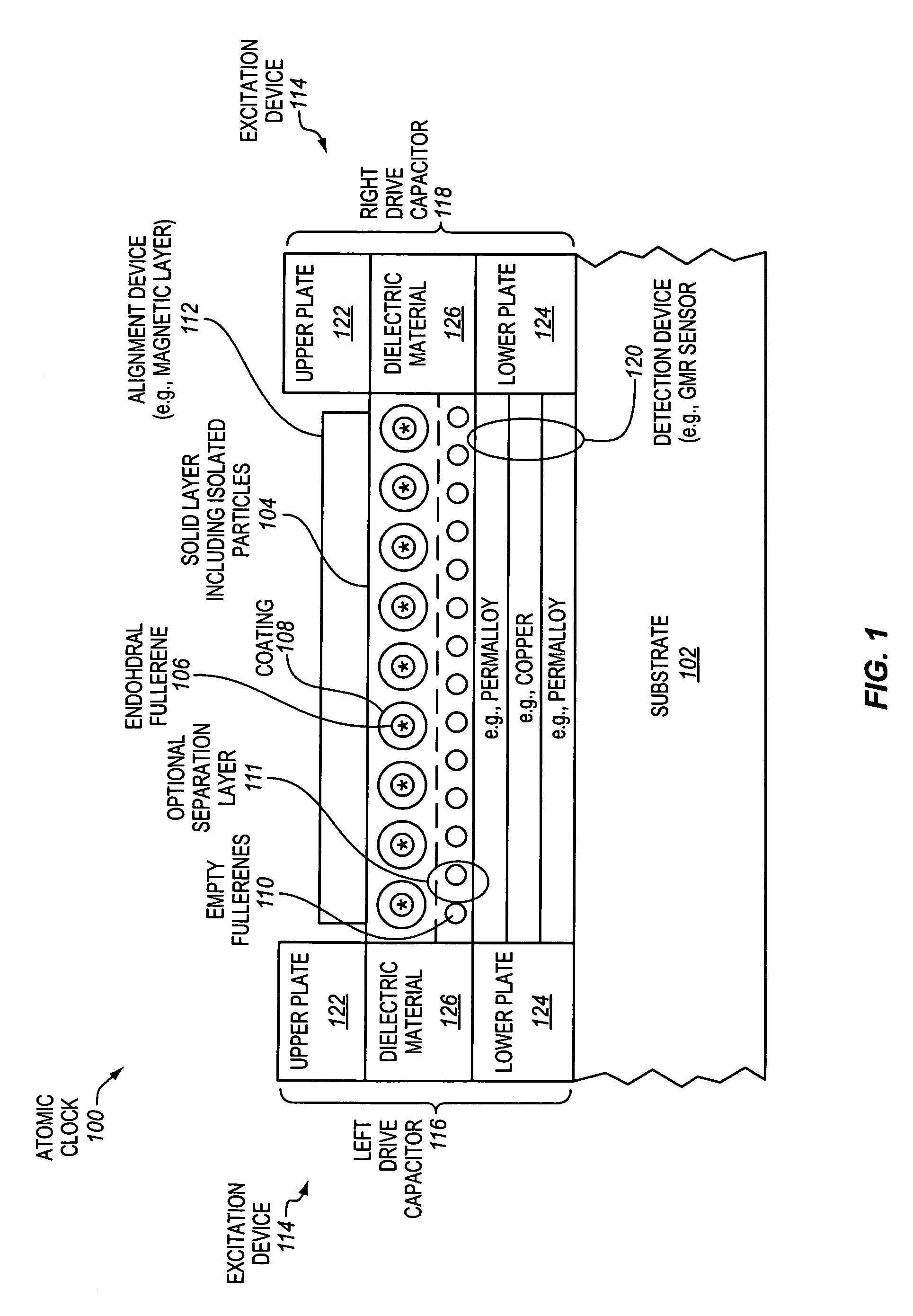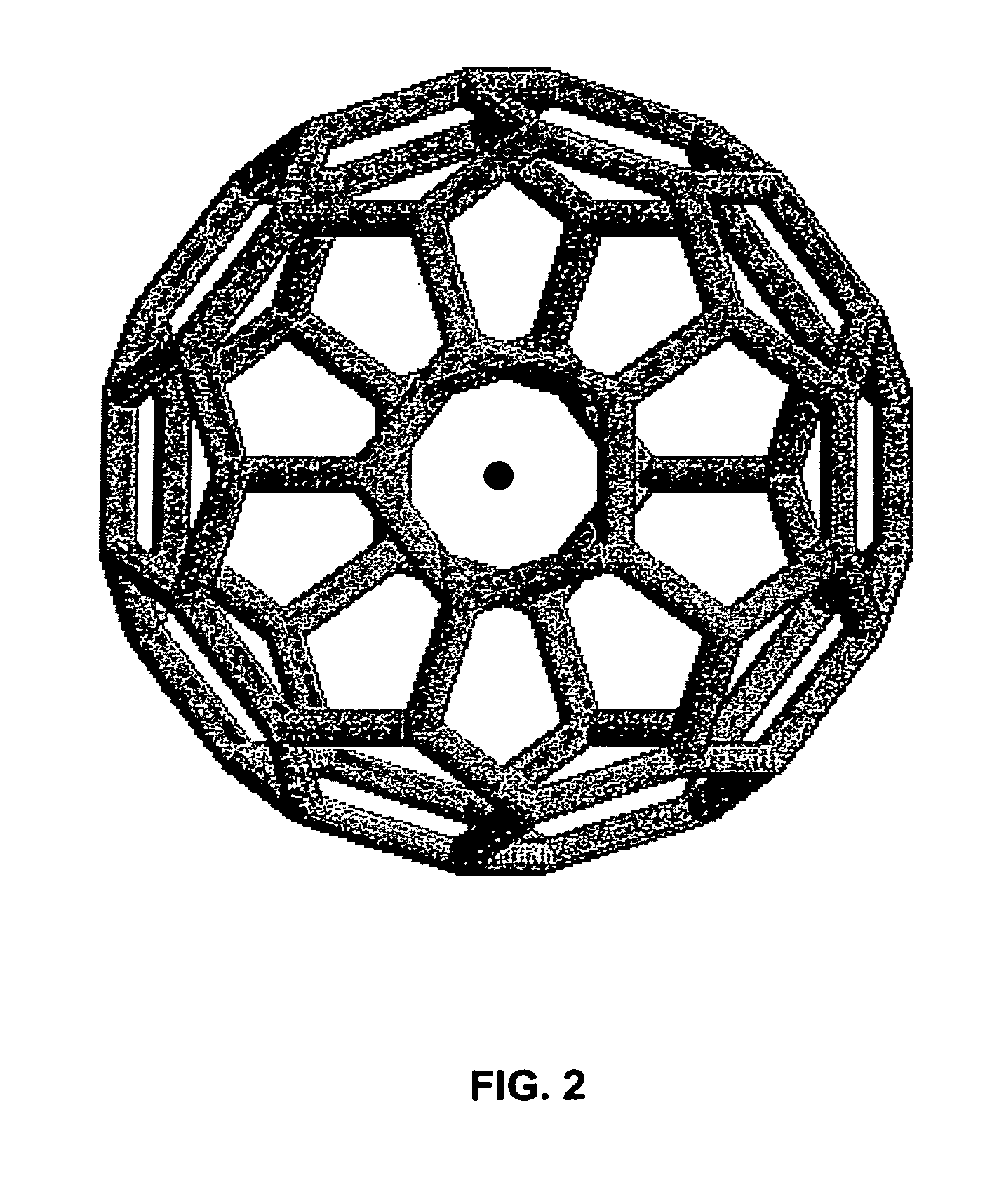Atomic clock
a technology of atomic clocks and clocks, which is applied in the direction of oscillator generators, pulse automatic control, masers, etc., can solve the problems of increasing design complexity and/or insignificant reduction in size, and the atomic clocks that are presently in widespread use tend to be relatively large,
- Summary
- Abstract
- Description
- Claims
- Application Information
AI Technical Summary
Benefits of technology
Problems solved by technology
Method used
Image
Examples
example 1
[0120]This prophetic or paper example further illustrates an exemplary atomic clock, according to one or more embodiments of the invention. The scope of the invention is not limited to this particular atomic clock. The atomic clock may have micron-scale dimensions. The atomic clock may include a solid layer of thickness on the order of about 100 nm formed over a semiconductor substrate that includes endohedral fullerenes, such as, for example, P@C60. The endohedral fullerenes may have glass coatings of thickness ranging from about 10 to 50 nm thereon. The atomic clock may include a magnetic layer formed over the substrate to align the spins of the endohedral fullerenes. A GMR or BMR sensor may also be fabricated using thin-film semiconductor processing over the substrate within a few nanometers of the endohedral fullerenes. A thin layer of amorphous carbon or empty fullerenes or like inert material may be disposed between the sensor and the endohedral fullerenes to provide spacing b...
PUM
 Login to View More
Login to View More Abstract
Description
Claims
Application Information
 Login to View More
Login to View More - R&D
- Intellectual Property
- Life Sciences
- Materials
- Tech Scout
- Unparalleled Data Quality
- Higher Quality Content
- 60% Fewer Hallucinations
Browse by: Latest US Patents, China's latest patents, Technical Efficacy Thesaurus, Application Domain, Technology Topic, Popular Technical Reports.
© 2025 PatSnap. All rights reserved.Legal|Privacy policy|Modern Slavery Act Transparency Statement|Sitemap|About US| Contact US: help@patsnap.com



